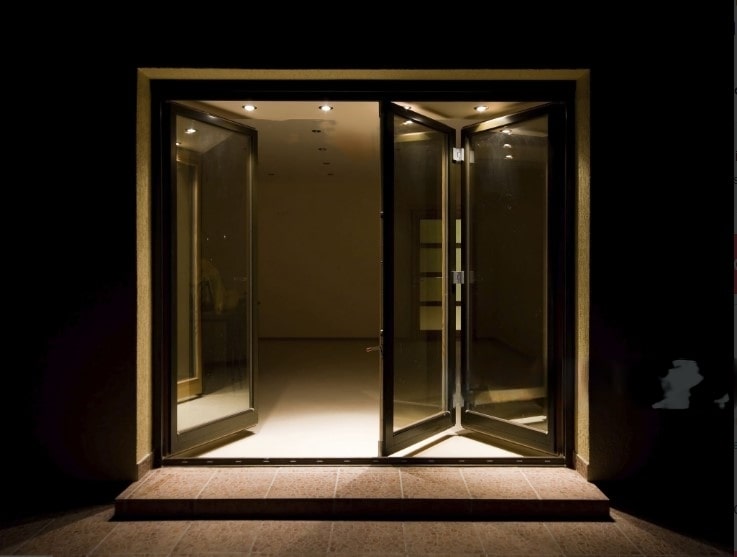Contents
- 1 Introduction to Flat Roofs
- 2 Signs That Your Flat Roof Needs Replacement
- 3 Different Types of Flat Roofing Materials
- 4 Pros and Cons of Each Material
- 5 Factors to Consider When Choosing a Flat Roofing Materiall
- 6 Process of Replacing a Flat Roof
- 7 Maintenance Tips for Extending the Lifespan of Your New Flat Roof
- 8 Conclusion:
Introduction to Flat Roofs
Is it time to bid farewell to your flat roof? If you’ve been experiencing leaks, water damage, or other signs of wear and tear, it might indicate that your roof needs replacement. However, several important factors must be considered before you embark on this project.
We’re here to guide you through everything from the different flat roofing materials available to replacing your old roof. So grab a cup of coffee and prepare for some valuable insights on making an informed decision for your home’s roofing needs!
Signs That Your Flat Roof Needs Replacement
Your flat roof is essential to your home’s structure, protecting it from the elements and ensuring its longevity. However, wear and tear may take a toll on your roof over time, leading to potential issues requiring immediate attention. Some signs indicate it may be time to replace your flat roof.
If you notice any signs of water leakage or moisture damage inside your home, it could indicate that your flat roof needs replacement. Stains on ceilings or walls, mould growth, or a musty odour are all red flags that should not be ignored.
Another sign to look out for is visible cracks or splits in the roofing material. These can occur due to age, weathering, or improper installation. If left unaddressed, these cracks can worsen over time and damage your home’s interior and exterior.
Additionally, if you observe sagging areas on your flat roof or uneven surfaces when inspecting from ground level, this could signify structural issues such as rotting decking underneath the roofing material. It’s crucial to notice these warning signs as they can lead to severe problems.
Furthermore, keep an eye out for blistering or bubbling on the surface of your flat roof. This often occurs due to trapped moisture beneath the roofing membrane and indicates potential underlying issues with ventilation or insulation.
Last but certainly not least important is considering the age of your current flat roof system. Most commonly used materials have an average lifespan of 10-30 years, depending on factors like maintenance and climate conditions, after which replacement becomes necessary.
Remember that identifying these signs early allows you to address them promptly before further damage occurs. Regular inspections by a professional can help determine whether repairs will suffice or if complete replacement is required for optimal protection and durability.
Different Types of Flat Roofing Materials
When it comes to flat roofing materials, there are several options available. Each material has unique characteristics and benefits, so it’s essential to understand the differences before deciding.
One popular option is built-up roofing (BUR), which consists of multiple layers of waterproofing materials such as asphalt or tar. BUR offers excellent durability and can withstand heavy foot traffic, but it can be severe and requires regular maintenance.
Another common choice is EPDM (ethylene propylene diene terpolymer) rubber roofing. This synthetic rubber material is lightweight, easy to install, and highly resistant to UV rays and weather damage. However, it may not be as durable as other options and require more frequent repairs.
Thermoplastic olefin (TPO) roofing is another option that provides excellent energy efficiency with its reflective surface. TPO roofs are also resistant to mould growth and punctures, making them famous for commercial buildings.
There’s PVC (polyvinyl chloride) roofing, which offers excellent durability against chemicals and pollutants. It also has strong resistance against fire damage and leaks due to its heat-welded seams.
Each flat roof material has pros and cons depending on your specific needs, such as budget constraints or environmental factors like climate conditions in your area. Considering these factors is crucial when choosing the suitable flat roofing material for your home or building project.
Pros and Cons of Each Material
When choosing the suitable material for your flat roof replacement, several options are available, each with its pros and cons. Let’s take a closer look at some popular flat roofing materials.
1. Built-up Roofing (BUR):
Pros: BUR is durable and provides excellent protection against UV rays. It is also fire-resistant and can be repaired easily.
Cons: BUR installation requires multiple layers, making it heavy and stressing the structure. It can also be more expensive compared to other options.
2. EPDM (Ethylene Propylene Diene Terpolymer):
Pros: EPDM is known for its flexibility, durability, and resistance to weather elements like hail or wind damage. It is relatively easy to install.
Cons: EPDM may not have the same lifespan as other materials, such as PVC or TPO. It can shrink over time, leading to potential leaks.
3. PVC (Polyvinyl Chloride):
Pros: PVC offers exceptional durability and resistance against chemicals, oil spills, punctures, and high temperatures.
Cons: The initial cost of installing a PVC roof can be higher than that of other materials.
4. TPO (Thermoplastic Olefin):
Pros: TPO roofs are energy-efficient due to their ability to reflect sunlight effectively. They provide excellent resistance against heat ageing and UV radiation.
Cons: Some concerns have been raised about the long-term performance of TPO roofs in extreme weather conditions.
5. Modified Bitumen:
Pros: Modified bitumen combines the advantages of built-up roofing with modern technology for enhanced performance.
Cons: Installation may require open-flame torches or hot asphalt kettle equipment, which could pose safety risks during installation.
It’s essential to consider factors such as budget, climate conditions in your area, and maintenance requirements before deciding on a specific flat roofing material that suits your needs best.
Factors to Consider When Choosing a Flat Roofing Materiall
Choosing the suitable material for your flat roof is crucial, as it will determine the durability and longevity of your roof. There are several factors you need to consider when making this decision.
Think about the climate in your area. Is it prone to extreme weather conditions such as heavy rain, strong winds, or intense heat? Different roofing materials have different levels of resistance to these elements. For example, EPDM rubber roofs are known for their excellent waterproofing properties and can withstand UV rays without deteriorating.
Consider the cost of installation and maintenance. Some materials may be more expensive upfront but require less maintenance over time. On the other hand, cheaper options may need regular inspections and repairs.
Another factor to keep in mind is the lifespan of each material. How long do you want your new flat roof to last? TPO roofs typically have a shorter lifespan compared to PVC or metal roofs.
Furthermore, consider the aesthetics of your chosen material. Do you prefer a sleek and modern look or something more traditional? Keep in mind that some materials offer more design options than others.
Think about energy efficiency. Insulation plays a significant role in reducing energy consumption and costs associated with heating or cooling your home. Certain roofing materials have better insulation properties than others.
By considering these factors carefully before deciding on which flat roofing material to choose, you can ensure that you make an informed choice that meets all your needs and requirements.
Process of Replacing a Flat Roof
Replacing a flat roof can be complex, but it can go smoothly with proper planning and the right professionals. Here’s what you need to know about the steps involved in replacing a flat roof.
A thorough inspection of your existing roof will be conducted to determine its condition and identify any underlying issues. This will help determine whether a complete replacement or repairs can suffice.
Once it has been determined that a replacement is required, the next step is choosing the suitable roofing material for your needs. Several options are available, including built-up roofs (BUR), modified bitumen roofs, EPDM rubber roofs, PVC roofs, and TPO roofs.
After selecting the appropriate material, the old roofing materials will be removed carefully to avoid damaging the underlying structure. Any damaged or rotted decking will also be replaced at this stage.
Next comes installing insulation layers and vapour barriers to improve energy efficiency and prevent moisture buildup. Then comes applying the new roofing material using adhesive or mechanical fasteners, depending on the chosen material.
Finishing touches, such as flashing installation around penetrations like vents and chimneys, are done to ensure watertightness. Proper drainage systems like gutters are also added if necessary.
It’s important to note that each step requires expertise and attention to detail for optimal results. Hiring experienced contractors who specialize in flat roof replacements is crucial for ensuring a successful project from start to finish.
Maintenance Tips for Extending the Lifespan of Your New Flat Roof
Regular maintenance is essential to ensure your new flat roof stands the test of time. Here are some tips to help you extend its lifespan and prevent any potential issues down the line.
It’s essential to keep your flat roof clean and free from debris. This includes removing leaves, branches, and other objects that may accumulate on the surface. Regular inspections should also be carried out to check for signs of damage or wear.
Next, ensure that gutters and drainage systems are clear and functioning correctly. Clogged drains can lead to water pooling on your roof, causing damage over time. Trimming any overhanging tree branches that could scrape against the ceiling is also a good idea.
Another critical aspect of maintenance is addressing any leaks promptly. Even small leaks can quickly escalate into more significant problems if left unattended. Regularly inspecting your ceiling for water stains or dampness can help you catch leaks early on.
In addition, it’s crucial to maintain proper ventilation in your attic space. Poor ventilation can trap moisture and heat, contributing to premature deterioration of your flat roof materials.
Consider scheduling professional inspections at least once a year. A roofing expert will be able to assess the condition of your flat roof more thoroughly and identify any areas requiring attention before they become significant issues.
By following these maintenance tips consistently throughout the lifespan of your new flat roof, you’ll not only prolong its durability but also save yourself from costly repairs in the future.
Conclusion:
When it comes to your home’s flat roof, keeping it in good condition is essential for protecting your investment and ensuring the safety and comfort of your family. Knowing when to replace a flat roof can be challenging, but you can make an informed decision by recognizing the signs and understanding the materials available.
If you notice persistent leaks, sagging areas, or extensive damage on your flat roof, these are clear indications that replacement is necessary. Ignoring these signs could lead to further structural damage and costly repairs
Choosing the suitable material for your new flat roof is crucial. Each type has pros and cons that should be carefully considered based on cost, durability, maintenance requirements, and climate suitability.
Whether you opt for built-up roofing (BUR), modified bitumen (MB), single-ply membrane systems like EPDM or TPO, or green roofs like vegetative systems or solar panels, please consider their advantages and disadvantages. Conduct thorough research or consult a professional roofer to determine which option best suits your needs.
Once you’ve decided and hired a reputable roofing contractor, they will guide you through each replacement process step. From removing old layers to installing insulation and applying new roofing materials accurately – professionals will ensure that every detail is taken care of efficiently.
Latest Posts!



